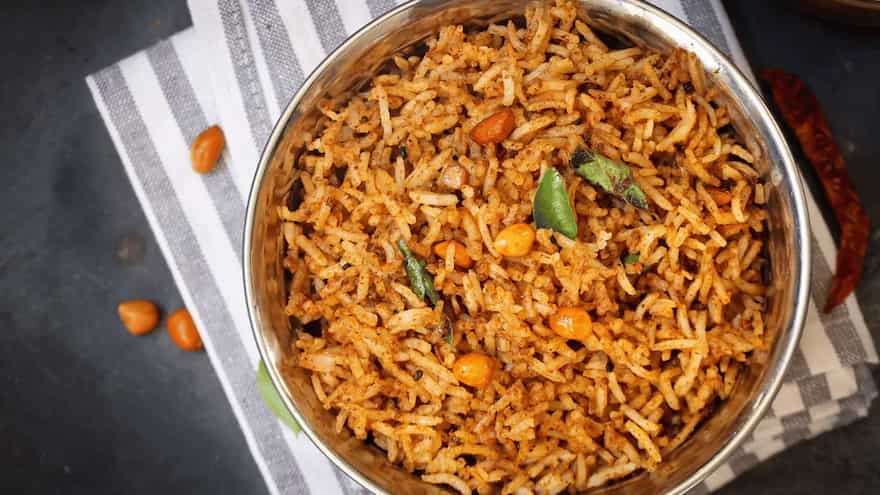Indian cuisine is renowned worldwide for its diversity, complex flavours, and cultural significance. While it is deeply rooted in ancient traditions, it has also been shaped by centuries of historical and cultural exchanges. One of the most significant influences on Indian food came from the Portuguese during their colonial rule. In this exploration, we will delve into seven iconic dishes, including the famous Vindaloo, which bear the Portuguese imprint on Indian culinary traditions.
1. Vindaloo: The Spicy Legacy
Vindaloo is a beloved and fiery Indian curry that traces its origins to the Portuguese dish "Carne de Vinha d'Alhos." The name "Vindaloo" is derived from the Portuguese words "vinho" (wine) and "alho" (garlic), reflecting the use of wine and garlic in the original preparation. Over time, the dish evolved in India, incorporating local ingredients and spices like red chillies and vinegar.

2. Balchão: The Tangy Delight
Balchão, another Portuguese-inspired dish, is a spicy, tangy, and flavorful curry originating from Goa. It is traditionally made with shrimp or fish, marinated in a fiery red chilli paste and vinegar. The Portuguese influence is evident in the use of vinegar, which is a hallmark of many Goan dishes.
3. Fugias: Sweet and Savoury Dumplings
Fugias, also known as fugias or fugias de peixe, are a unique dish that showcases the fusion of Portuguese and Goan cuisines. These dumplings are made from a combination of rice flour, grated coconut, and jaggery (unrefined sugar), creating a delightful blend of sweet and savoury flavours. Fugias are typically served during Goan festivals and special occasions, reflecting the state's multicultural culinary heritage.
4. Bebinca: Goa's Layered Dessert
Bebinca is a traditional Goan dessert that beautifully marries Portuguese and Indian culinary influences. This layered pudding is made from coconut milk, sugar, ghee, and eggs, creating a rich and decadent treat. Bebinca's texture is dense and creamy, with a caramelised top layer that adds a delightful contrast of flavours. The use of eggs and coconut milk is reminiscent of Portuguese desserts, while the technique of layering is a nod to Indian culinary traditions. Bebinca is a must-try for those seeking a taste of Goan heritage.
5. Sorpotel: A Hearty Stew
Sorpotel, a savoury pork stew that originated in Goa, is a testament to the blending of Indian and Portuguese culinary influences. This dish is made from pork, liver, and other organ meats, which are slow-cooked in a rich and spicy gravy made with vinegar, red chilies, and spices. Sorpotel's unique flavour profile is a reflection of Goa's multicultural history and its integration of Portuguese and Indian ingredients and techniques.
6. Chorizo: Spiced Sausages
Chorizo, a type of spiced sausage, is another culinary legacy of Portuguese influence in India, particularly in Goa. These sausages are typically made from a mixture of pork, vinegar, red chilies, and spices, giving them a bold and smoky flavour. Chorizo is a versatile ingredient used in a variety of Goan dishes, including curries, rice preparations, and appetisers. It adds depth and complexity to these dishes while highlighting the fusion of Portuguese and Indian culinary traditions.
7. Sol Kadhi: Refreshing Cooler
Sol Kadhi is a refreshing drink that finds its roots in Goa's coastal cuisine. It is made from coconut milk and kokum (a sour fruit native to India) and is often consumed as a palate cleanser or cooling beverage alongside spicy Goan dishes. While kokum is an indigenous ingredient, the combination with coconut milk and the concept of a cooling beverage align with Portuguese influences on Goan cuisine.
The influence of Portuguese cuisine on Indian food, particularly in regions like Goa, has resulted in a delectable fusion of flavours and culinary techniques. Dishes like Vindaloo, Balchão, and Bebinca bear witness to this historical exchange of culinary traditions, creating a rich and diverse tapestry within the broader spectrum of Indian cuisine. These dishes not only celebrate the merging of cultures but also offer a delightful exploration of flavours that continue to captivate palates around the world.


